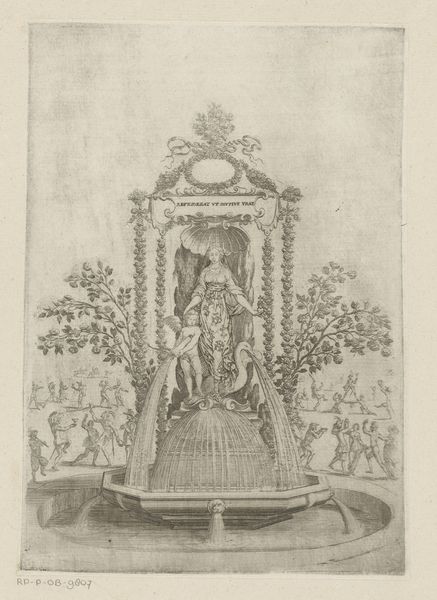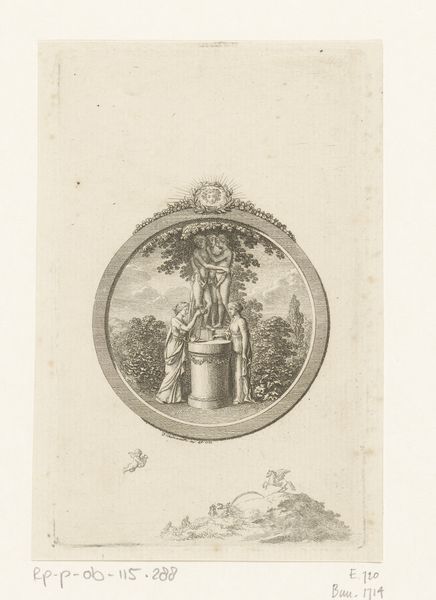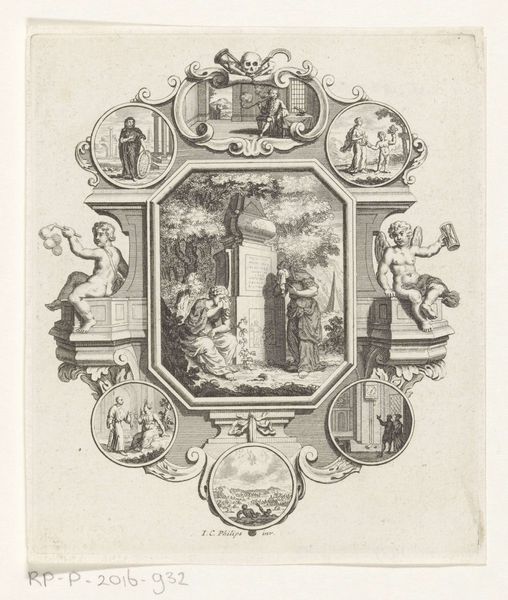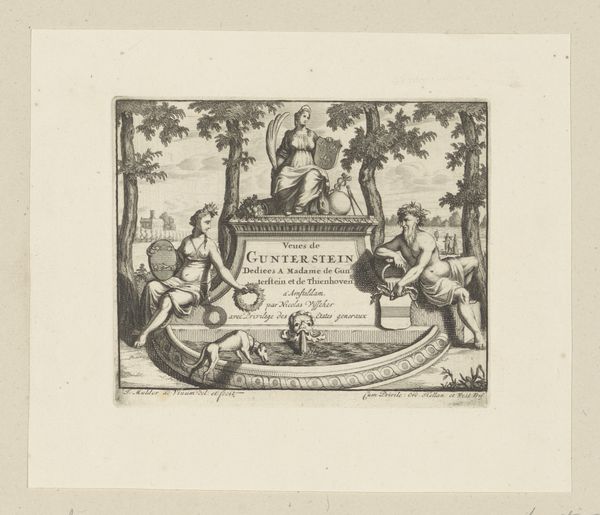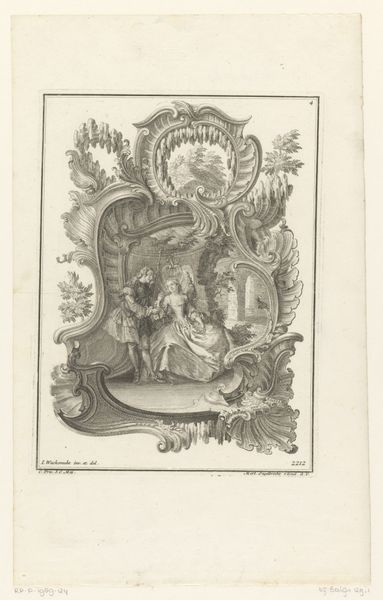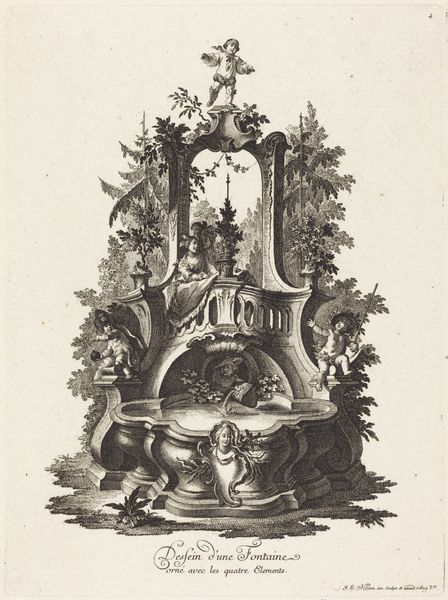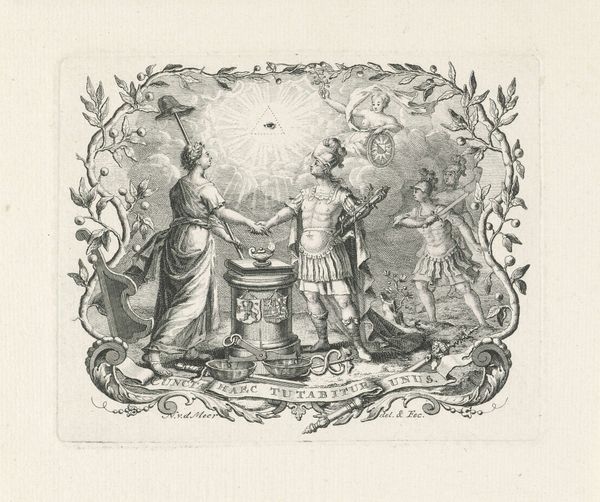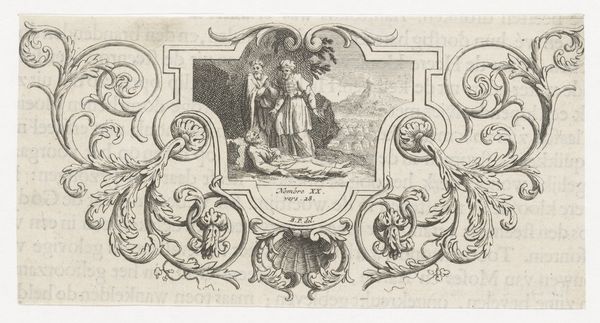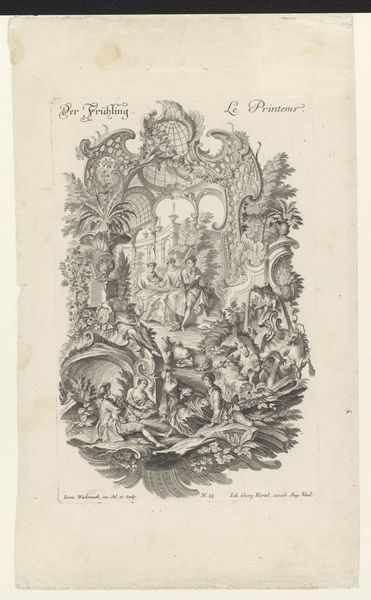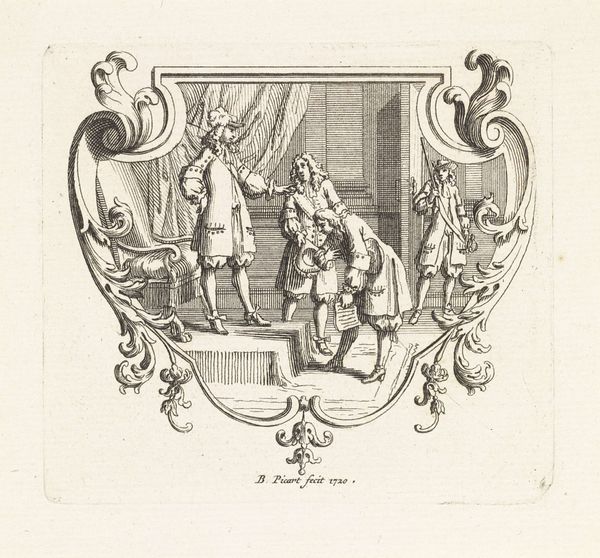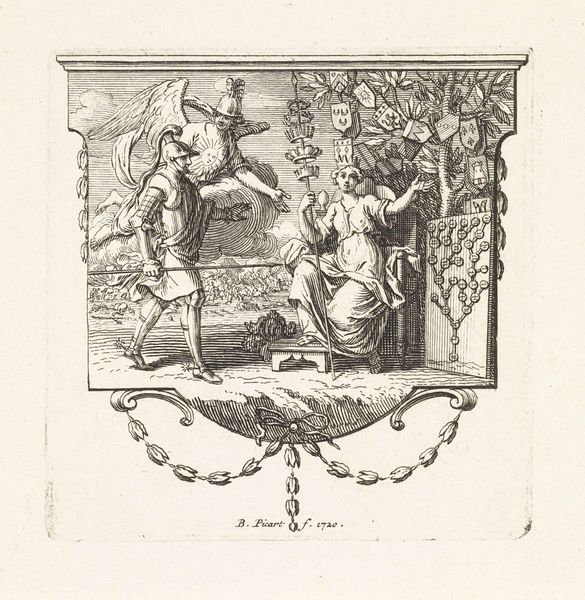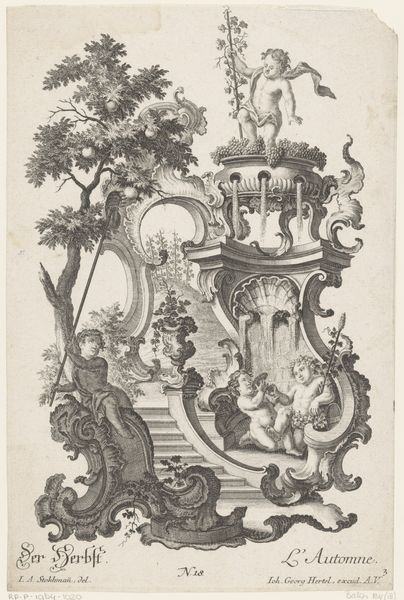
drawing, print, ink, engraving
#
drawing
#
pen drawing
# print
#
pen illustration
#
pen sketch
#
old engraving style
#
landscape
#
ink
#
genre-painting
#
engraving
#
rococo
Dimensions: height 74 mm, width 66 mm
Copyright: Rijks Museum: Open Domain
Curator: What a charming scene! We're looking at "Figuren rondom een bijenkorf," or "Figures Around a Beehive," a work by Reinier Vinkeles created in 1761. Editor: It's so delicate. The fine lines of the engraving create an almost dreamlike quality. What materials did Vinkeles use? Curator: This is a print, employing engraving and etching techniques with ink on paper. You can appreciate the skilled labor that went into each line. Printmaking in this era served as a vital tool for disseminating ideas and images beyond elite circles. Editor: Absolutely, and its creation would have been firmly embedded in the printmaking guilds and workshops of the time. How do these spaces inform its iconography, though? Curator: Vinkeles situates us firmly in a Rococo landscape populated with figures tending a beehive. Notice the elaborate structure overhead, almost like a gazebo, framing cherubic figures amidst the clouds. Editor: Yes, that is the key: these whimsical embellishments would appeal greatly to wealthy landowners hoping to capture that agrarian spirit so commonly represented during this time. Consider its location in the Rijksmuseum, as well: its context today transforms its reception versus how it might have been seen at a domestic location in the 1700s. Curator: A wonderful point. Think too about the cultural symbolism of the beehive – industry, community, prosperity. Vinkeles uses the detailed engraving medium to depict both the quotidian and aspirational. It brings the idea of labor and societal organization literally to the drawing table. Editor: Precisely! The controlled medium allows us to reconsider not just subject matter, but that dissemination I mentioned previously. Without the politics of accessible images, perhaps the same sentiments about working or living collaboratively would fail to circulate as vividly. Curator: Exactly. It's fascinating how a single print can open up conversations about labor, production, and social dynamics of the 18th century. Editor: Indeed. The convergence of technique and historical context makes it so relevant today. It shows us how perceptions are both framed and re-framed by evolving landscapes.
Comments
No comments
Be the first to comment and join the conversation on the ultimate creative platform.
